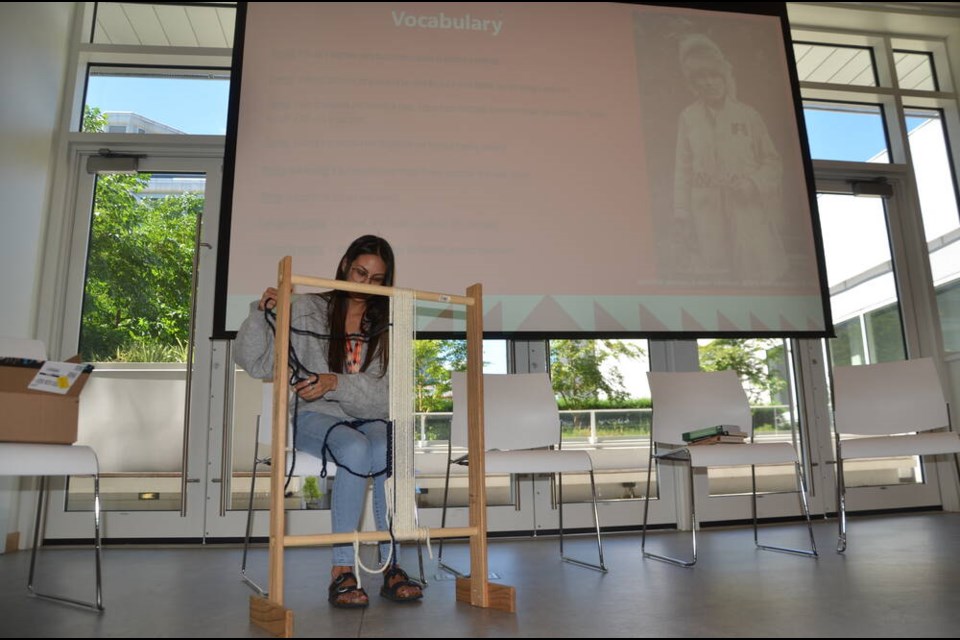It is quiet in the Museum of North Vancouver’s sunlit workshop room.
The small handful of people present, seated in a wide semi-circle, are in furious concentration, their bodies hunched over their own individual projects. In one hand each holds a small piece of cardboard wrapped in brightly coloured wool, while the other weaves a long piece of yarn. Over, under, over, under.
While the premise of weaving wool for a Coast Salish bracelet is simple - weaving one piece of yarn horizontally across a warping, a set of lengthwise yarns held in tension on a loom or a piece of cardboard - the execution isn’t as easy as one might expect. The act requires dexterous fingers, fierce concentration and, most importantly of all, patience.
“That’s what I love about weaving. Every single part of this process is going to teach you patience, right from the get go,“ says MONOVA’s Indigenous Cultural Programmer Jordan Dawson.
Dawson, from the Sḵwx̱wú7mesh Úxwumixw (Squamish Nation), is hosting a wool weaving workshop at the museum as part of its month-long roster of National Indigenous History Month events - a selection of speakers series, workshops, exhibitions and screenings dedicated to celebrating the history and culture of First Nations, Inuit and Métis.
Throughout the workshop Dawson delves into the interconnected history of wool weaving and the Squamish people.
She talks of how Coast Salish communities have been harvesting natural materials for wool weaving since the beginning of time, utilising cedar bark and nettles or the coats of mountain goats and the now extinct Coast Salish woolly dog to create highly valued blankets and regalia. A process, from beginning to end, that could take anywhere between seven and ten years.
Whether twill or twine the weaving technique can change, says Dawson, as can the colours and style employed, but one aspect that must remain the same is the mindset one is in when they are creating.
“When you’re making them it’s all about the energy that goes into it, you’re wanting to think good thoughts, feel good thoughts and put that into what you’re making.”
If a mistake is made and patience is lost, Dawson says, it’s best to set the project aside and recoup - take a walk, read, or make a snack - before trying once more.
Luckily in the workshop room at MONOVA there is not a whiff of frustration. Instead each guest works away in quiet contentment, only breaking their silence once their bracelet is complete to offer words of thanks to Dawson for sharing such an integral part of her culture.
The small crowd is a varied bunch comprising children and adults, locals and travellers.
Dawson says it has been the case with all of her workshops - past attendees have included visitors from the likes of Columbia and Miami - and she is overwhelmed to see the interest in reconciliation from people from all walks of life.
“It’s so nice to see people trying to educate themselves, especially those from the older generation,” she says.
“That’s what this month is about, not just education on the sad and the tragic aspects of Indigenous history but the positive and celebratory bits too.”
For a full look at what's on for National Indigenous History Month, and National Indigenous Peoples Day on June 21, on the North Shore, consult our guide here.
Mina Kerr-Lazenby is the North Shore News’ Indigenous and civic affairs reporter. This reporting beat is made possible by the Local Journalism Initiative.



